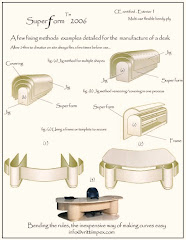
Now very much a collectors item,find one if you can? if you find two,please let me know!
The Barlow Wadley portable solid state radio. A super performance AM and SW radio that utilizes the "Wadley Phase loop system". Manufactured by Barlows Television Company, New Germany, Natal, South Africa.
Page created by John F. Barlow
The Barlow Wadley XCR-30 Receiver - QST Test Jan 1977 (by W1CP)
The Barlow Wadley XCR-30 portable receiver provides frequency coverage from 500 Khz to 30 Mhz. It is powered by six 1.5 volts cells (nine volts overall) which are fitted into a battery case inside the receiver.
The XCR-30 is capable of receiving upper or lower sideband and AM.CW can be received by placing in one of the sideband modes. There is a fine tuning adjustment called an SSB CLARIFIER, two tuning dials are used, one for setting the Mhz range and the other dial provides 1000 Khz coverage with 10 khz dial markings.
It is easy to tune the receiver to within a kilohertz or two of a predetermined frequency with some accuracy. A volume control and a antenna-peaking control are also located on the front panel. Additionally, there is a ZERO SET control which is used for exact frequency setting to compensate for temperature or humidity variations should such adjustement be necessary.
The built-in antenna is of the telescoping whip variety and is approximately 40-inches long, when fully extended. Provisions are made for an external antenna. But the receiver is designed for maximum performance using the whip, I found during my use of the receiver that the whip did a creditable job.
Circuit Details
Fig.1 provides the general information of signal paths. Assume an incoming signal of 13.7 Mhz, with the Mhz dial set at 13 Mhz, the Mhz set oscillator will be at 58.5 Mhz. This, mixed with the incoming 13.7 Mhz signal, produces the first IF of 48.8 Mhz which is amplified and fed to the 3rd balanced mixer. The 58.5 Mhz set oscillator signal is fed to another mixer where it is combined with the output of a harmonic generator. The harmonic generator is based on a 1 Mhz crystal oscillator which produces a signal at 1 Mhz intervals. The only signal appearing in the harmonic filter is the 58.5 Mhz signal and 16th armonic of the harmonic generator. These signals produce the 42.5 Mhz signal which is amplified and fed to the 3rd mixer along with the 44.8 Mhz signal. The resultant signal is a 2.3 Mhz which is fed to the 2 to 3 Mhz interpolation section of the receiver. The Khz dial to 700 will, therefore, tune this section of the receiver to the 2300 Khz signal coming from the 3rd mixer.
The maximum audio power is 400 mW which seems more than adequate even in noisy outdoor environments. There is also a headphone output available.
Selectivity is rated by the manufacturer at 6 Khz for AM and 3 Khz for CW/SSB. I found the selectivity adequate for listening, even on the crowded amateur bands (and the 11 meter CB frequencies).
The receiver is a full fledged communications type, not a toy. I tried the receiver with a separate transmitter and found it would do a noteworthy job.
There are many uses for a portable, general-coverage receiver. I used the receiver to chase down a noisy power-line pole in one instance.
In another, the receiver came in handy for the on-site antenna work to check a grid-dip meter for proper operation and frequency accuracy. Battery power consumption is low - 20 mA with no signal up to 200 mA at full audio. - W1CP






















































